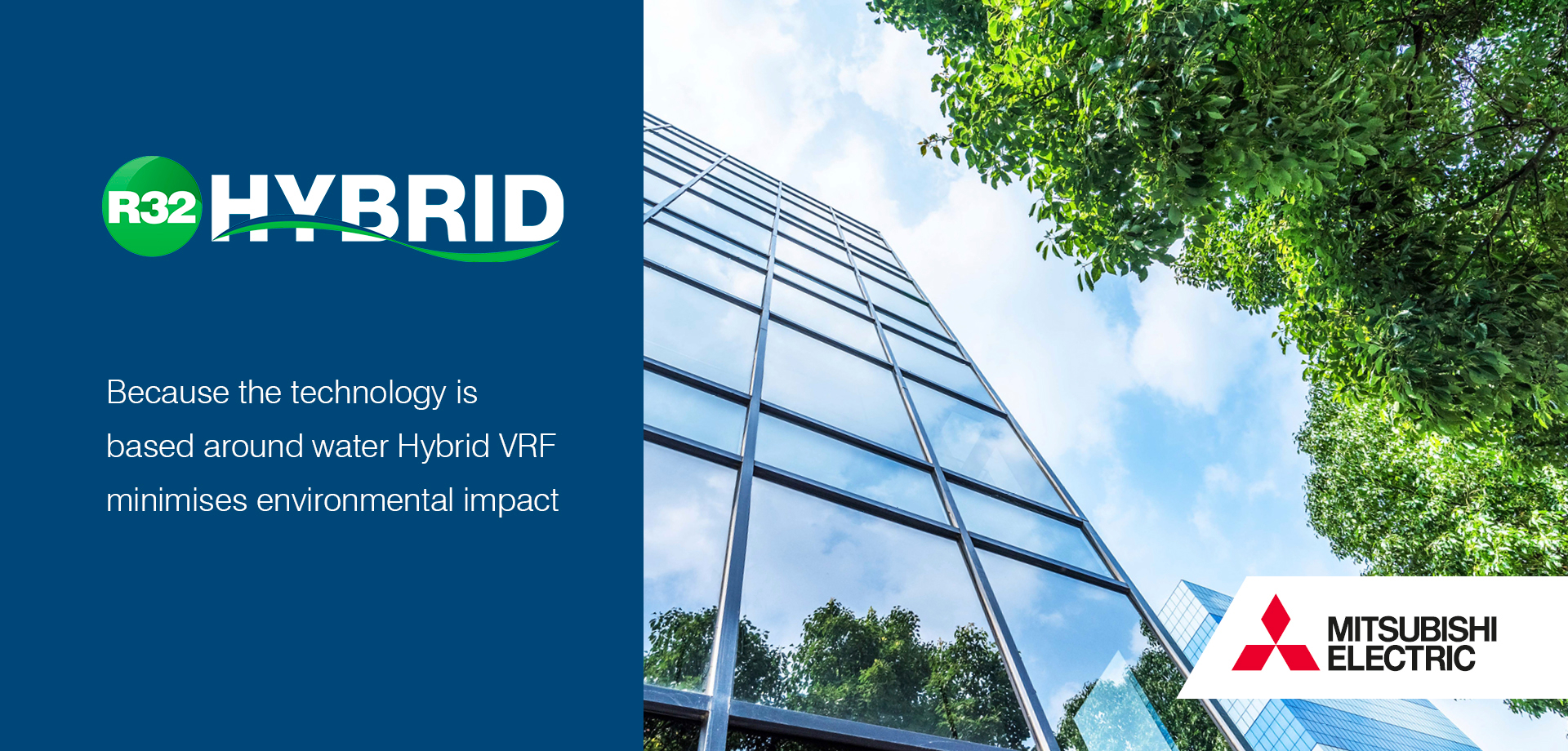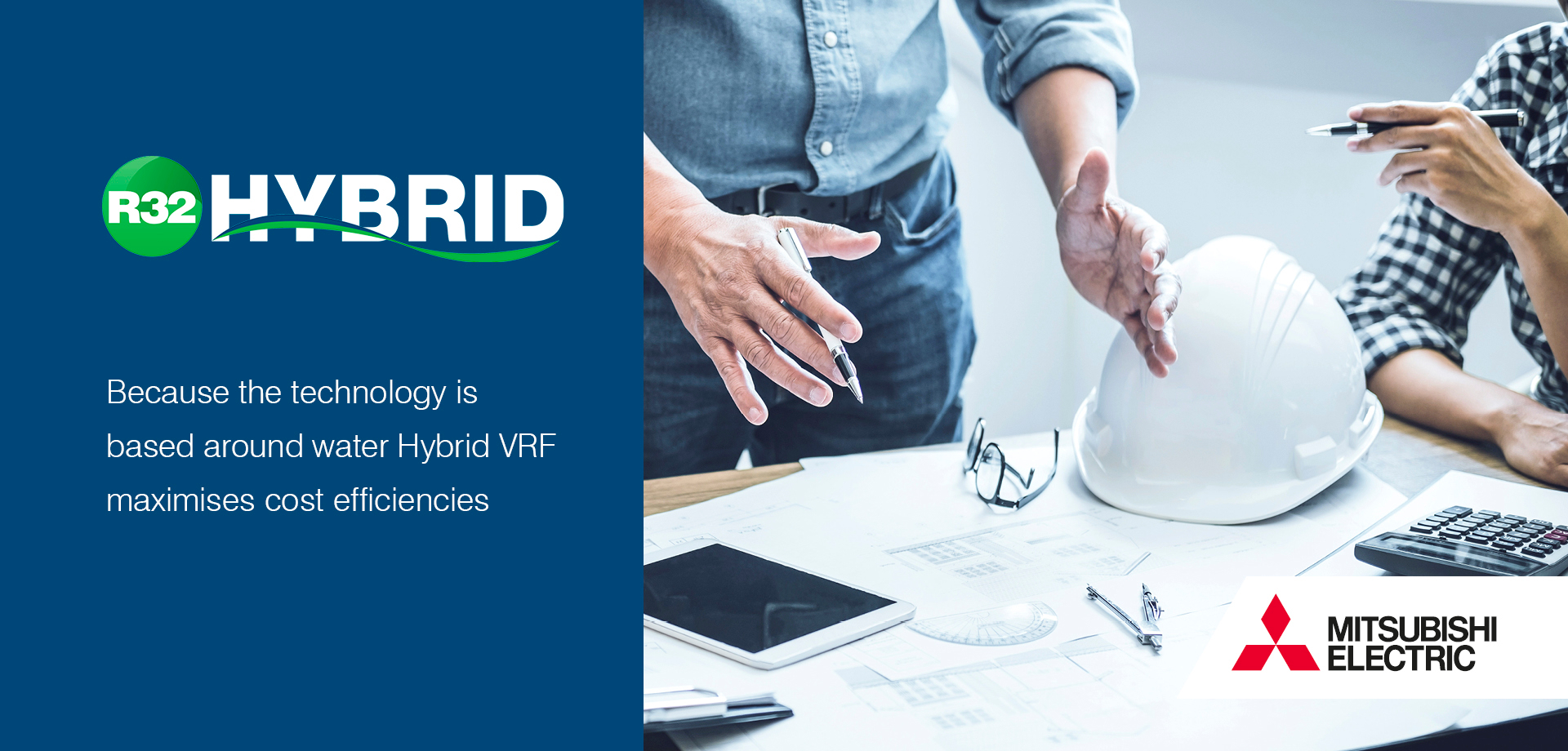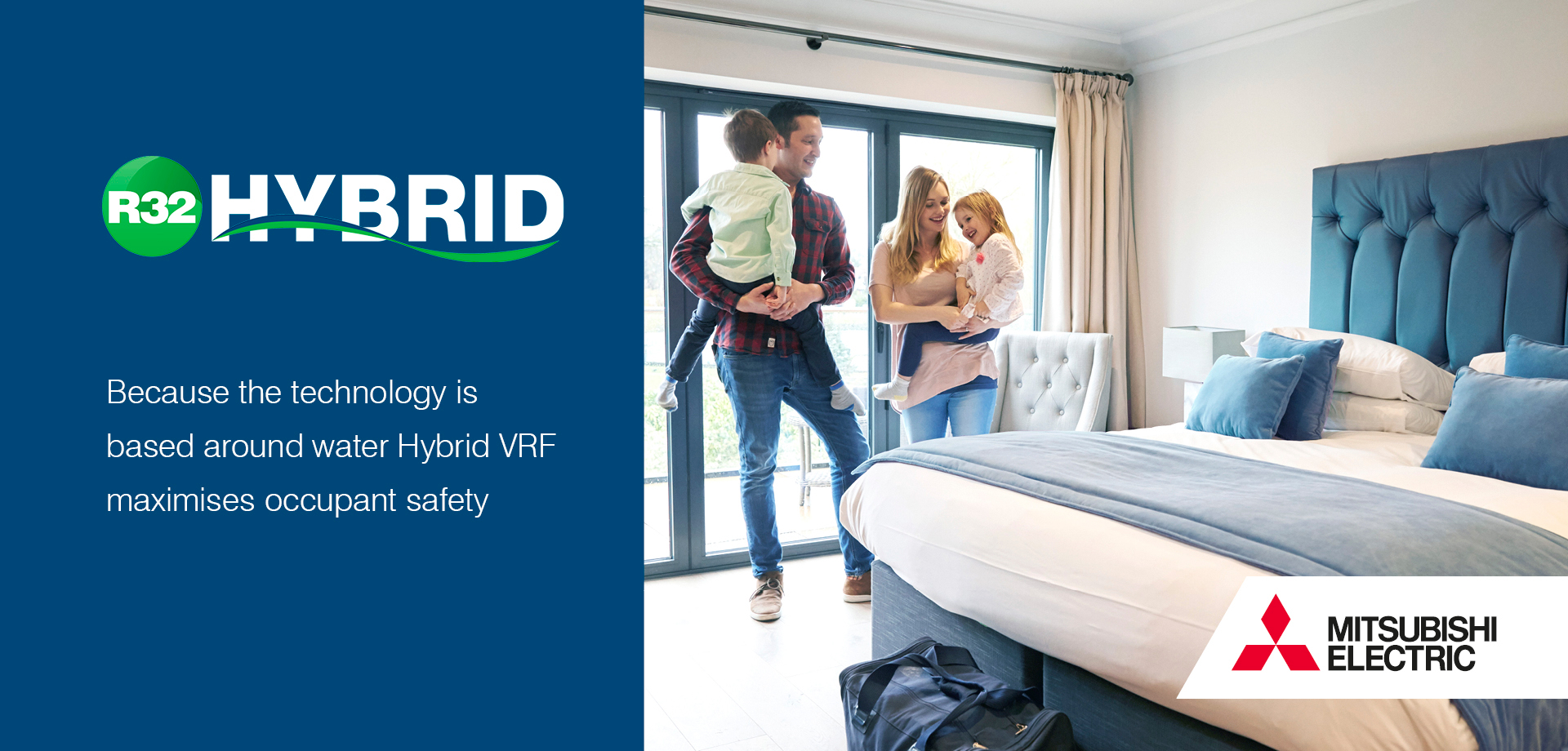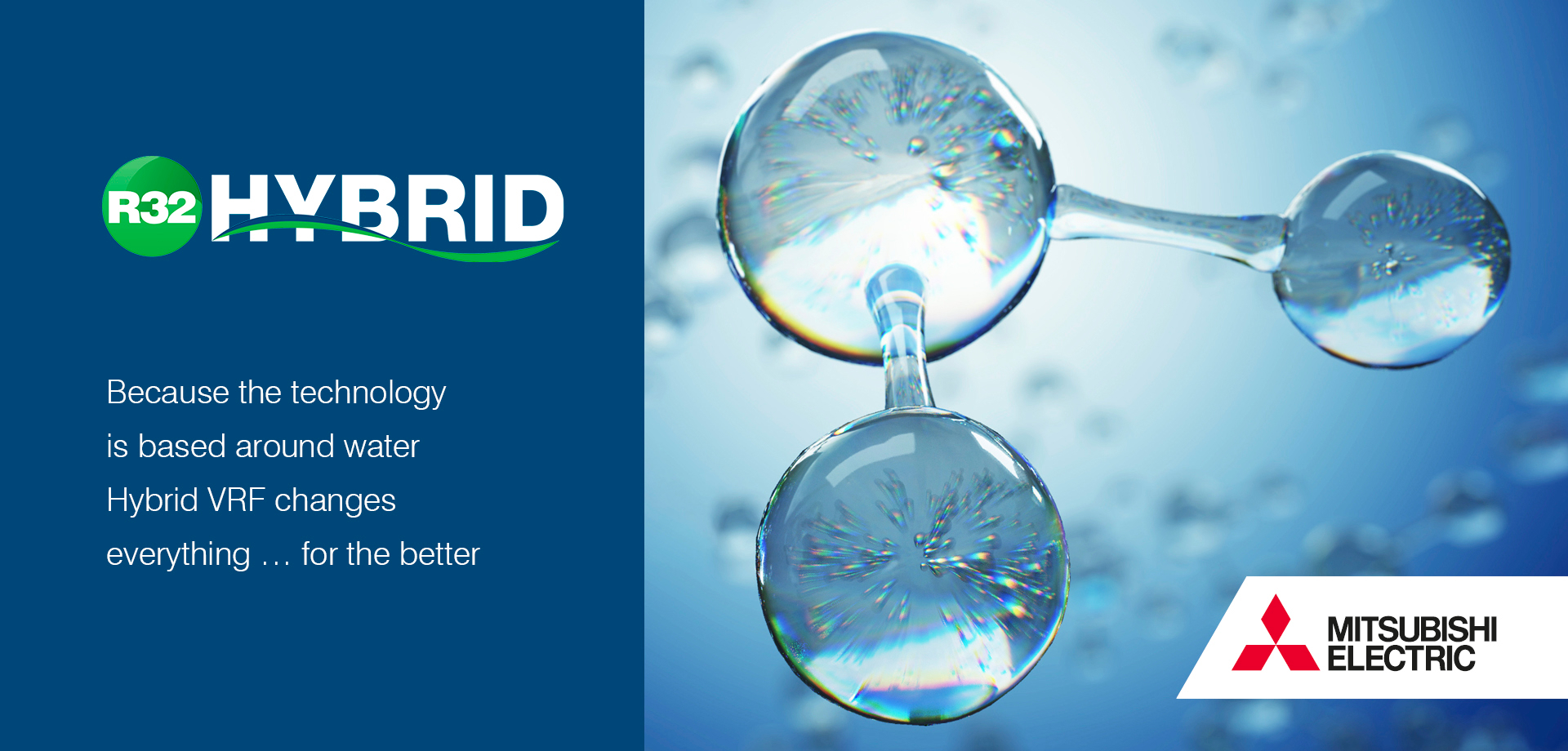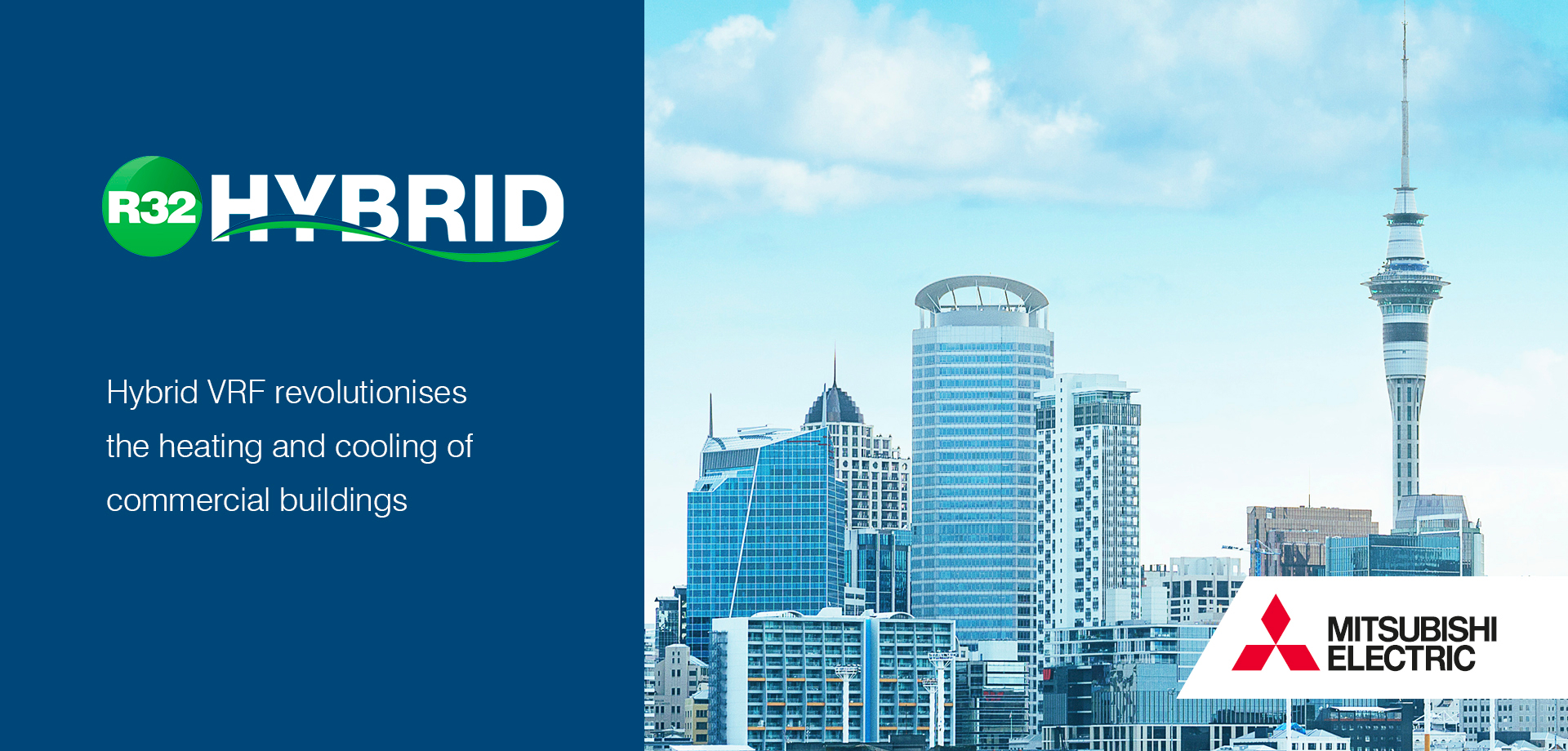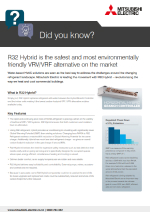
R32 Hybrid VRF - Simultaneous Heating and Cooling
HVRF Now with R32 Refrigerant
The Future-Proof VRF Solution Offering Simultaneous Heating and Cooling with Minimal Environmental Impact
With the environmental pressure on R410A refrigerant increasing, Mitsubishi Electric’s commitment to reducing the environmental impact of air conditioning has seen the introduction of New Zealand’s first VRF (Variable Refrigerant Flow) solution that has utilised R32 Refrigerant.
Mitsubishi Electric has long been a pioneer in the world of air conditioning and the world’s first R32 Hybrid VRF product range puts the company at the forefront of the industry.
The system utilises the low GWP refrigerant R32, providing a real solution that delivers high operational efficiency whilst minimising the global warming potential of the refrigerants used within these systems.

All the Benefits of VRF with Significantly Lower GWP
The 2-pipe Hybrid VRF system offer the same comfort levels normally associated with 4-pipe fan coil systems. In addition, the system also features the same design flexibility, operational efficiency and advanced control that Mitsubishi Electric traditional VRF is renowned for.
Because Hybrid VRF now also incorporates R32 refrigerant, it delivers a VRF system with a significantly lower global warming potential (GWP) than existing solutions.
In fact, the shift from R410A to R32 Refrigerant realises a massive 66% reduction in global warming potential.
R32 – The Greener Solution
The Shift Away from R410A Refrigerant to Low GWP Alternatives like R32
The global community is in a race to lower its carbon footprint and decrease the rate of global warming before it is too late.
As part of this drive, the Kigali amendment to the Montreal Protocol – ratified on the 3rd of October 2019 – dictates the rate of phase down of HFC refrigerants for New Zealand as part of this strategy – and will commence on the 1st of January 2020.
It is estimated that this directive has the potential to avoid aggregate emissions of more than 90 Giga tonnes CO2e by 2050 – equivalent to two years of total global greenhouse gas emissions (US EPA 2016)!
The key to achieving this goal is the shift away from traditional refrigerants such as R410A.
Replacing traditional refrigerants to those with a much lower GWP, will be a big step towards significantly reducing the future potential rate of rise in the earth’s temperature and the catastrophic effects that would have on our planet.
Regulated Phase Down of CO2 Emissions
GWP is a measure of the warming potential as compared to CO2 which has a unitary GWP of 1.
R32 Refrigerant is zero ozone depleting and has a GWP 66% less than R410A. For example R410A will hold 2,088 times more heat when released in the upper atmosphere than the equivalent amount of CO2 would.
R32 refrigerant is being adopted by Mitsubishi Electric as an important step in the process towards the ultimate goal of a zero ODP, zero GWP, efficient, safe, and non-toxic refrigerant.

ETS – Emissions Trading Scheme
In New Zealand specifically, the ETS has put a price on greenhouse gas emissions and provides an incentive to reduce emissions and promote strategies to absorb carbon dioxide. This is known as the SGG (Synthetic Greenhouse Gas) Levy.
Due to the increasing cost of refrigerant associated with the ETS Synthetic Greenhouse Gas Levy (NZ), building capital and maintenance costs will continue to climb using traditonal heating and cooling systems that utilise higher GWP refrigerants such as R410A.

